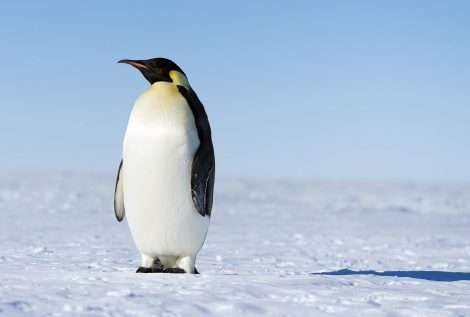No, Penguins do not have hair. Instead, they have small feathers that are waterproof. The outside main feathers ensure an aqua-dynamic body which makes them an amphibian.
The “underneath” feathers and pummels, both regulate heat by having a non-adhesive structure that traps air. All penguins are covered with scales and feathers from head to foot. It is an unusual character as it only belongs to penguins and they get it when they become an adult.

Penguins can stay warm with the many layers of feathers on its body. These feathers are just perfect to keep them warm. The undercoat layer is a soft downy type of feathering; the surface includes water-resistant protect feathers, that act a chunk like the hair on an otter to repel water and keep warmth inside the frame.
Types of Feathers on a Penguin’s Body
Feathers have many functions beyond which it fulfills flight, including thermoregulation, display, camouflage, and waterproofing. There are different types of feathers that contribute to these functions. Large feathers are Contour feathers, and the outer layer of a bird’s feather coat is called stiff-vaned feathers. The contour feathers are also called flight feathers that create the airfoil of the wing. In volant birds, the feathers are large, but in penguins, the “flight” feathers are reduced to tiny, scale-like structures.
Plumules are downy feathers with looser barbs, cottony texture and a soft feel. These feathers typically lie under the contour or flight feathers and provide an insulating layer.
Penguin’s weirdest type of feather is the obscure filoplume. Filoplumes are essentially bare feather shafts and small. They can serve no insulator or aerodynamic reason and are instead hypothesized to assist birds in detecting the orientation in their large feathers. Penguins have long been taken into consideration to lack filoplumes. However, that does not seem to be the case.
First, penguins had a maximum of nine feathers per square centimeter a lower density. That’s nowhere near the record for birds. The white-throated dipper, a small Eurasian bird or penguins that forages in cold mountain streams, has plumage that’s six times denser.
Second, Williams found certain types of feathers that were not so expecting. In Antarctica’s, waters using after feathers small downy plumes that are attached to their primary feathers.
Many studies assume that emperor penguins in Antarctica insulate themselves from the bitter cold of the water. Williams found certain types of after feathers on birds, but also four times as many plumules with a separate kind of downy feather that attaches directly to the skin.
The Study
From a new study tackled the question of Emperor Penguin feather density, a compelling issue has given the capacity of these birds to survive icy and windy conditions.
From Antarctica, the salvaged emperor penguin carcasses team took small square patches of skin from different parts of the body. They mapped and counted out the arrangement of varying feather types within each patch. The many feathers were the downy plumules, which were four times more abundant than filoplumes and contour feathers.
Reference –
https://answers.yahoo.com/question/index?qid=20090102155843AAzLMGx
Image Credit: